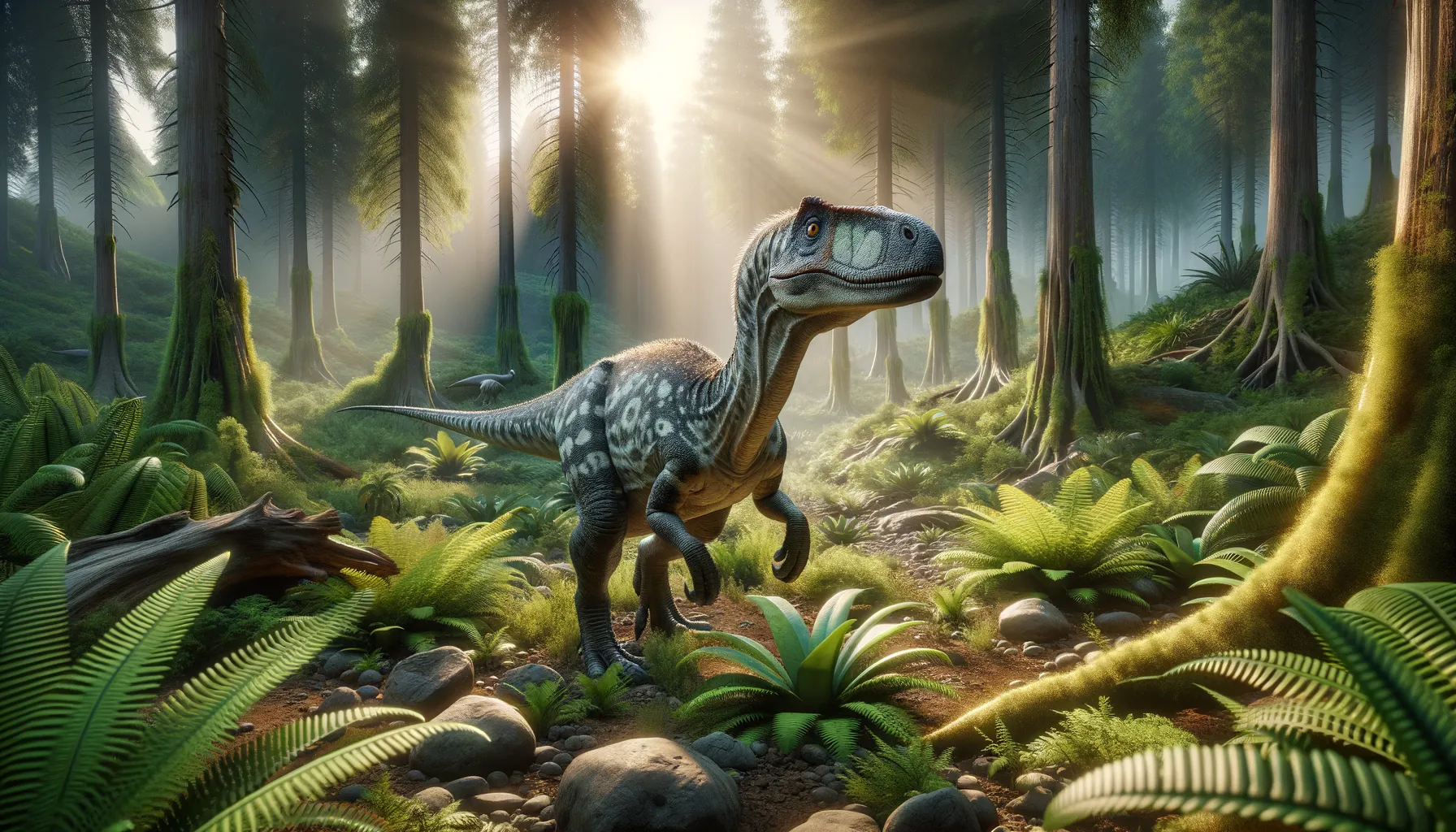
Tethyshadros
A swift veggie-muncher from the ancient seas.
Period
Cretaceous
Length
Roughly 4 meters long.
Height
About 2 meters tall at the hips.
Weight
Approximately 350 kilograms.
Tethyshadros was a relatively small, quick dinosaur that roamed the Cretaceous period. It belonged to a group known as hadrosaurs, or duck-billed dinosaurs. Despite its moderate size, Tethyshadros exhibited fascinating traits that make it stand out. Known from fossil remains discovered in Europe, it provides insight into the migration and adaptation of dinosaurs across ancient continents. Being herbivorous, it primarily fed on a variety of plant materials available during its era.
Diet
Primarily a herbivore, Tethyshadros fed on available plant life. Its diet likely included leaves, stems, and possibly fruits. The landscape provided diverse vegetation, catering to its nutritional needs.
Hunting
Being a herbivore, Tethyshadros did not hunt other animals. Instead, it foraged in groups, using its size and beak to gather plant material efficiently. Its main predators included carnivorous dinosaurs sharing its habitat.
Environmental challenges
Tethyshadros faced challenges from dynamic weather patterns and periodic droughts. Competition for food with other herbivores was a constant concern. Additionally, it had to stay vigilant against evolving predators. These conditions likely shaped its social and foraging behaviors.
Speed
Perhaps moderately fast for a herbivore.
Lifespan
Likely around 30 years.
First discovery
Discovered in Italy in the early 2000s.
Fun Facts
- Tethyshadros was a dinosaur that lived approximately 80 million years ago during the Late Cretaceous period.
- It was discovered in what is now Italy, providing evidence that dinosaurs lived in Europe during this time.
- Tethyshadros belonged to the group of dinosaurs known as hadrosaurs, which are often referred to as 'duck-billed dinosaurs' due to their distinctive snouts.
- Unlike many of its relatives, Tethyshadros was relatively small, estimated to be about the size of a large dog or a small horse.
- Scientists believe Tethyshadros may have lived on an island, which could explain its smaller size compared to other hadrosaurs.
- The name 'Tethyshadros' comes from 'Tethys,' a sea that existed during the Mesozoic Era, and 'hadros,' a reference to its family group.
- Tethyshadros had long, graceful legs, suggesting it might have been a fast runner, helping it escape predators.
Growth and Development
Tethyshadros grew relatively quickly in its early years, reaching near full size early. Juveniles remained close to their mothers for protection and learning. Growth rates may have slowed as it aged, allowing it to adapt to the available resources.
Habitat
It lived near coastlines and floodplains, environments rich in plant life and water. These areas supported a variety of dinosaurs and other life forms. The landscape consisted of lush vegetation and periodic water sources. Seasonal changes influenced the availability of resources.
Interaction with other species
Tethyshadros likely coexisted with various other dinosaur species. Some of its contemporaries were potential predators, influencing its group behaviors. The presence of numerous herbivores in its habitat might have led to some competition for resources. It may have played a role in the ecosystem as both a consumer and prey.
Natural lifespan
Tethyshadros had a natural lifespan of around 30 years.
Reproduction
Tethyshadros likely laid eggs in nests, similar to many dinosaurs. Parental care might have involved guarding the nest and young. Clutches were possibly numerous, increasing chances of offspring survival.
Social behaviour
Group living was essential for protection and resource sharing. Tethyshadros may have communicated through vocalizations and body movements. Social bonds were likely strong within family units. Such behaviors helped reduce predation risks, especially for juveniles.
Fossil locations
Fossils have been predominantly found in northeastern Italy. The area is known for its rich paleontological deposits. Discoveries have provided valuable data on Europe's ancient ecosystems. Continued excavations may reveal further insights into its life and times.
